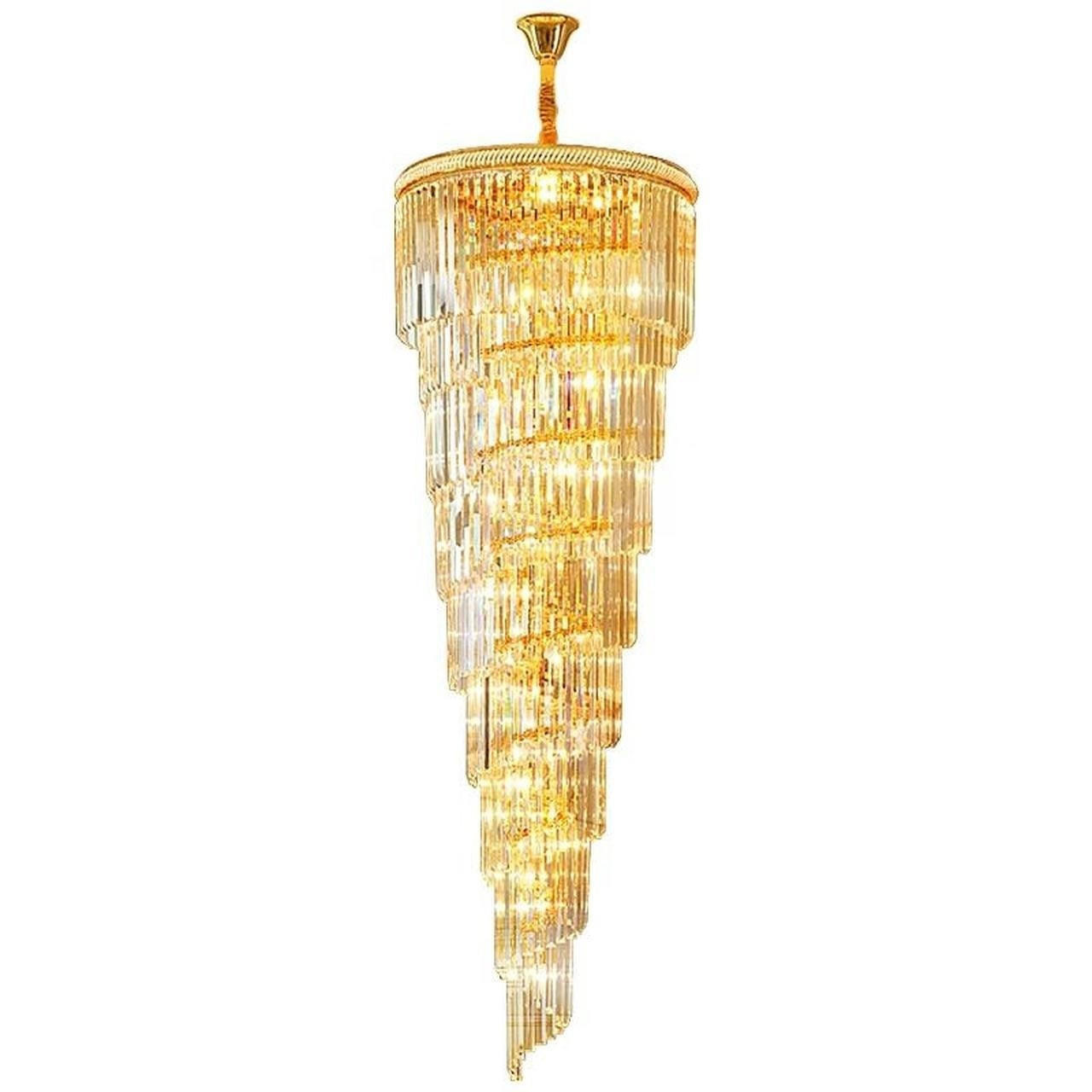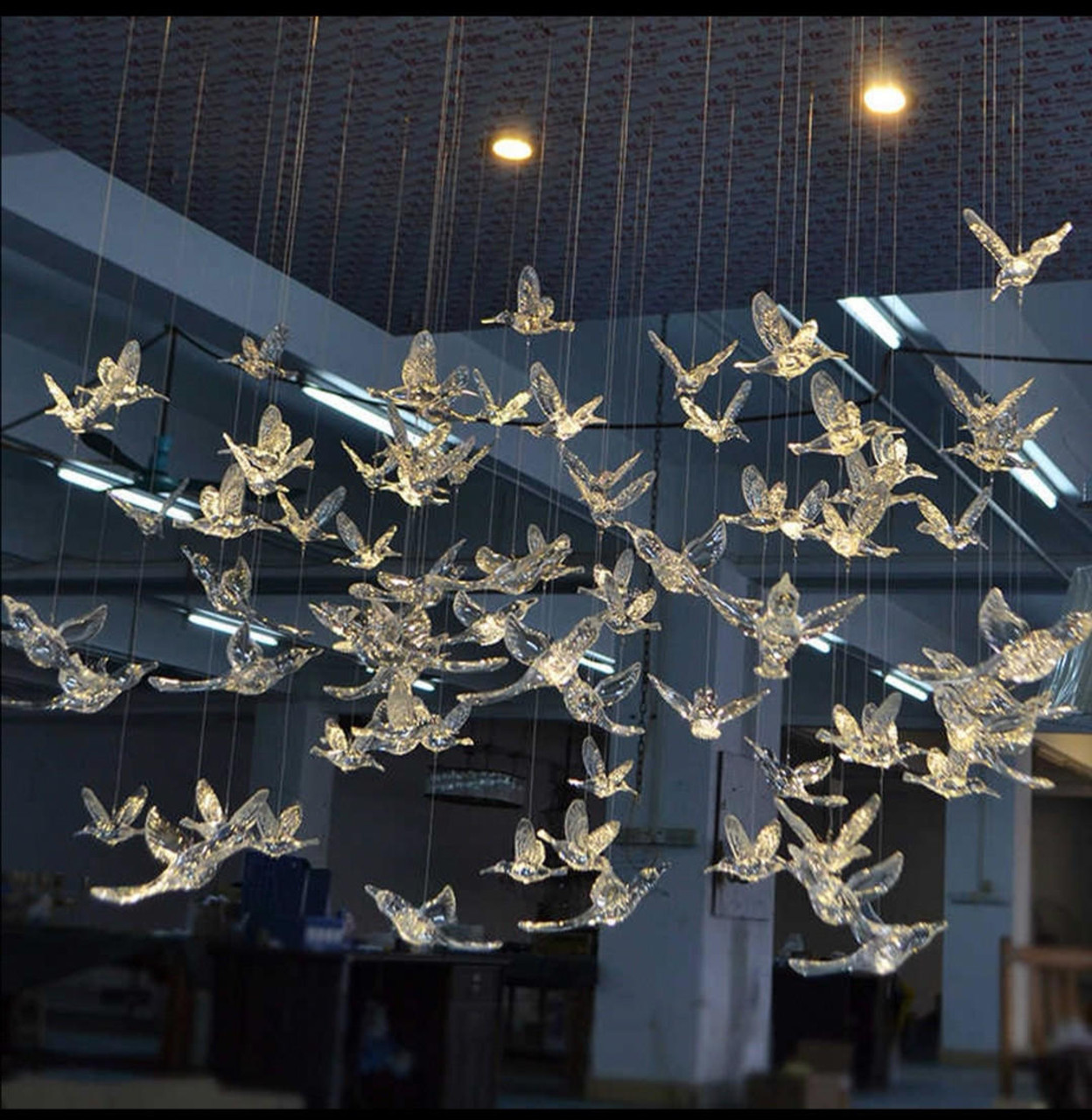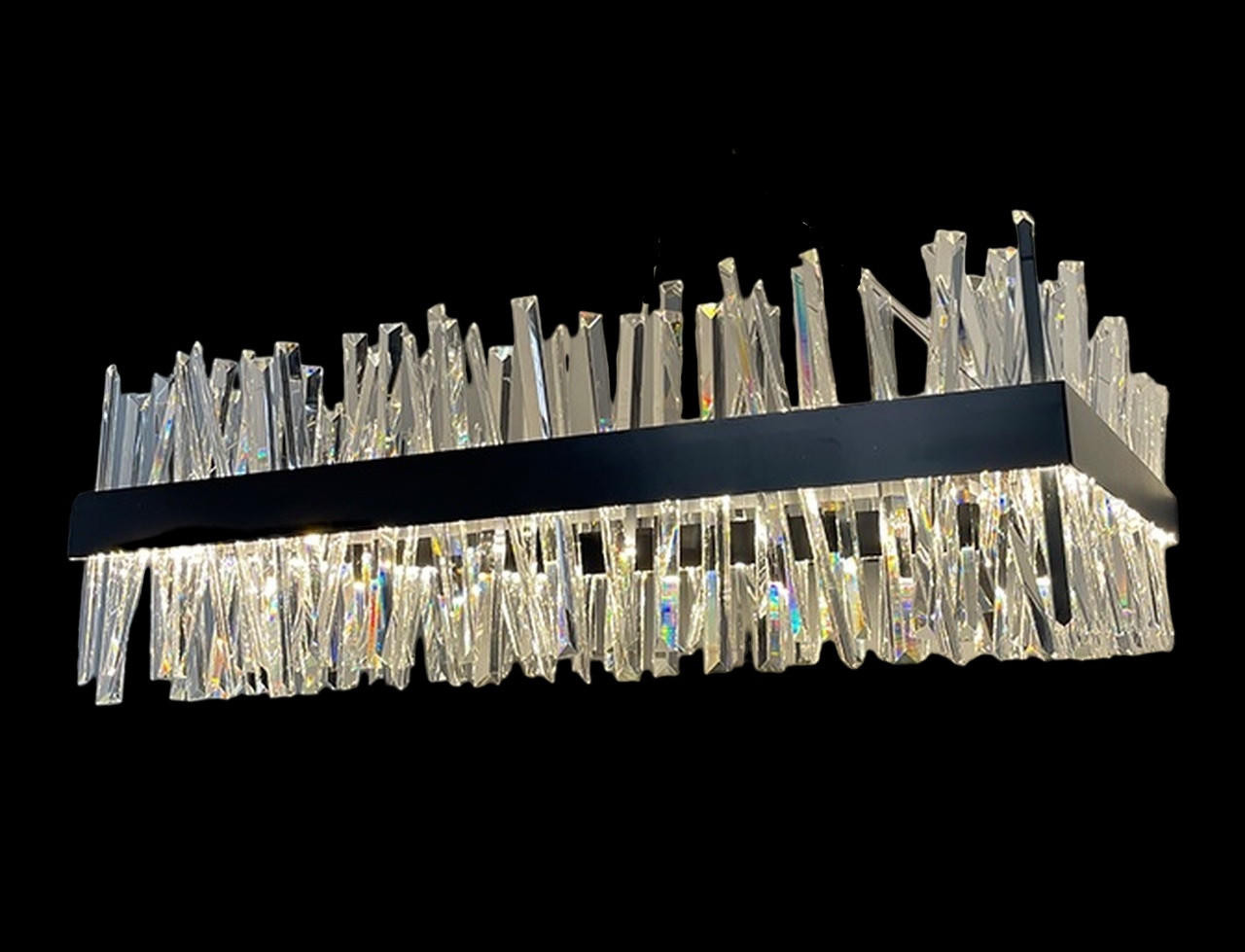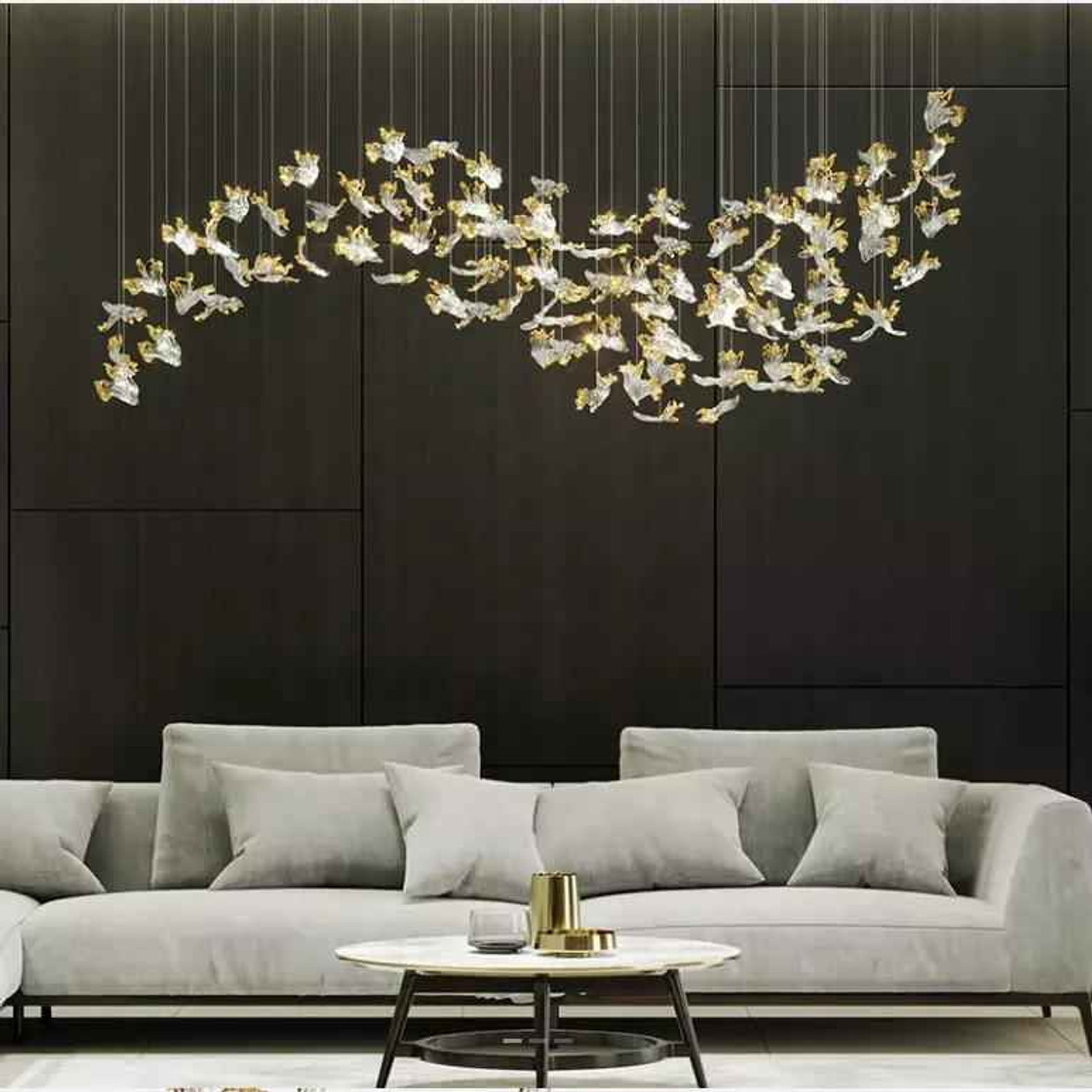K9 Crystal vs Asfour Crystal: A Comprehensive Comparison
2nd Sep 2024
When it comes to selecting crystal for chandeliers, jewellery, or other decorative items, choosing the right type of crystal can be a daunting task. Among the most popular options are K9 crystal and Asfour crystal. Both are renowned for their beauty and clarity, yet they differ in several key aspects, including composition, quality, cost, and application. Understanding these differences can help you make an informed decision when selecting the best crystal for your needs. This blog will delve into a detailed comparison of K9 crystal vs Asfour crystal, exploring their origins, properties, and uses to help you determine which is the ideal choice for your project.
What Is K9 Crystal?
K9 crystal is a type of optical borosilicate glass, often referred to as K9 glass or simply K9. It originated in China and has become widely used in various applications due to its excellent optical properties and affordability. The "K" in K9 refers to the Chinese optical standard, and the "9" represents the lead content, which is 9% by weight. However, K9 crystal is lead-free, making it a popular choice for those seeking a more environmentally friendly option.
Composition and Properties
K9 crystal is made from a combination of silica, potassium oxide, and other oxides. The absence of lead in K9 crystal makes it lighter than traditional leaded glass or crystal, but it still retains a high level of clarity and brilliance. This type of crystal is known for its exceptional light transmission and refractive index, making it an excellent choice for optical applications such as lenses, prisms, and other optical instruments.
The clarity of K9 crystal is one of its most notable properties. It is nearly as clear as leaded crystal, with a high level of transparency that allows it to refract light beautifully. This makes K9 crystal an ideal material for chandeliers, where its ability to catch and reflect light can create a dazzling display.
Cost and Affordability
One of the primary reasons for the popularity of K9 crystal is its affordability. Compared to other types of crystal, such as leaded crystal or Asfour crystal, K9 crystal is significantly less expensive to produce. This makes it an attractive option for manufacturers and consumers alike who are looking for high-quality crystal at a lower price point.
The lower cost of K9 crystal does not mean that it sacrifices quality. In fact, K9 crystal is highly regarded for its optical clarity and durability, making it a cost-effective alternative to more expensive crystals. This affordability has made K9 crystal a popular choice in a wide range of applications, from chandeliers and lighting fixtures to jewelry and decorative items.
Applications of K9 Crystal
K9 crystal is incredibly versatile and is used in a variety of applications. Some of the most common uses of K9 crystal include:
- Chandeliers and Lighting Fixtures: K9 crystal is widely used in chandeliers and other lighting fixtures due to its excellent light transmission and refractive properties. The crystal prisms and droplets used in these fixtures can create stunning light displays, adding elegance and sophistication to any space.
- Optical Instruments: Due to its high optical clarity and low dispersion, K9 crystal is used in the production of lenses, prisms, and other optical components.
- Jewelry: K9 crystal is also used in costume jewelry, where its brilliance and clarity make it an affordable alternative to natural gemstones.
- Decorative Items: From figurines to decorative glassware, K9 crystal is often used in decorative items due to its aesthetic appeal and affordability.
What Is Asfour Crystal?
Asfour crystal is a high-quality crystal produced by Asfour Crystal, a company based in Egypt that has been manufacturing crystal since 1961. Asfour Crystal is renowned for its commitment to excellence, and its products are widely regarded as some of the finest crystals in the world. Asfour crystal is often compared to Swarovski crystal in terms of quality, clarity, and brilliance.
Composition and Properties
Asfour crystal is made from high-purity silica, with a lead content of up to 30%. The presence of lead oxide in Asfour crystal enhances its refractive index, giving it a higher level of brilliance and sparkle compared to lead-free crystals like K9. The lead content also makes Asfour crystal denser and heavier, which contributes to its luxurious feel and appearance.
One of the defining characteristics of Asfour crystal is its exceptional clarity. Asfour Crystal employs advanced manufacturing techniques to ensure that its crystal is free from inclusions, bubbles, and other imperfections. This results in a crystal that is virtually flawless, with a clarity that rivals that of natural gemstones.
The high refractive index of Asfour crystal allows it to disperse light into its component colors, creating a stunning rainbow effect when light passes through it. This makes Asfour crystal an ideal material for chandeliers, jewelry, and other decorative items where brilliance and sparkle are desired.
Cost and Value
Asfour crystal is considered a premium product, and its price reflects its high quality. The cost of Asfour crystal is higher than that of K9 crystal, primarily due to the use of lead and the advanced manufacturing processes required to produce such a high-quality product. However, many consider the investment in Asfour crystal to be worthwhile due to its superior clarity, brilliance, and overall aesthetic appeal.
While Asfour crystal is more expensive than K9 crystal, it is still generally more affordable than other premium crystals like Swarovski. This makes Asfour crystal an excellent choice for those who want high-end crystal without the higher price tag of other luxury brands.
Applications of Asfour Crystal
Asfour crystal is used in a wide range of high-end applications, where its clarity, brilliance, and luxury appeal are highly valued. Some of the most common uses of Asfour crystal include:
- Chandeliers and Lighting Fixtures: Asfour crystal is a popular choice for luxury chandeliers and lighting fixtures, where its high refractive index and clarity create stunning light displays.
- Jewelry: Asfour crystal is often used in fine jewelry, where its brilliance and clarity make it a desirable alternative to natural gemstones.
- Decorative Items: From crystal vases to figurines, Asfour crystal is used in a variety of decorative items that are prized for their beauty and craftsmanship.
- Architectural Installations: Asfour crystal is also used in large-scale architectural installations, where its ability to refract light can create breathtaking visual effects.
K9 Crystal vs Asfour Crystal: A Side-by-Side Comparison
Now that we've explored the individual characteristics of K9 crystal and Asfour crystal, let's compare them directly in several key areas:
1. Clarity and Brilliance
- K9 Crystal: K9 crystal is highly regarded for its optical clarity, with minimal imperfections and a high level of transparency. However, because it is lead-free, it does not have the same level of brilliance or light dispersion as leaded crystals like Asfour.
- Asfour Crystal: Asfour crystal is known for its exceptional clarity and brilliance, thanks to its high lead content. The lead enhances its refractive index, allowing it to disperse light more effectively and create a dazzling rainbow effect.
Winner: Asfour crystal offers superior clarity and brilliance, making it the preferred choice for applications where maximum sparkle is desired.
2. Weight and Density
- K9 Crystal: K9 crystal is lighter than leaded crystals due to the absence of lead. This makes it easier to work with and less prone to breakage, but it also lacks the weight and heft that some associate with high-quality crystal.
- Asfour Crystal: The lead content in Asfour crystal makes it denser and heavier, which can contribute to a more luxurious feel and appearance.
Winner: Asfour crystal is heavier and denser, giving it a more premium feel.
3. Durability
- K9 Crystal: K9 crystal is highly durable and resistant to scratching and chipping, making it a good choice for items that may be handled frequently or exposed to wear and tear.
- Asfour Crystal: Asfour crystal, while beautiful, is more delicate due to its lead content. It can be more prone to scratching or chipping if not handled with care.
Winner: K9 crystal is more durable, making it a better choice for applications where durability is a priority.
4. Affordability
- K9 Crystal: K9 crystal is significantly more affordable than Asfour crystal, making it an attractive option for those on a budget or for large-scale projects where cost is a concern.
- Asfour Crystal: Asfour crystal is more expensive due to its higher quality and lead content. However, it is still generally more affordable than other luxury crystals like Swarovski.
Winner: K9 crystal is the more affordable option, making it a better choice for budget-conscious buyers.
5. Environmental Considerations
- K9 Crystal: K9 crystal is lead-free, making it a more environmentally friendly option. It is also lighter and easier to produce, which can reduce its environmental impact.
- Asfour Crystal: Asfour crystal contains lead, which can have environmental and health implications if not handled properly during production and disposal.
Winner: K9 crystal is the more environmentally friendly choice.
Conclusion: Which Crystal Is Right for You?
The choice between K9 crystal vs Asfour crystal ultimately depends on your specific needs, preferences, and budget. If you are looking for a crystal that offers excellent clarity, durability, and affordability, K9 crystal is an excellent choice. Its lead-free composition makes it a more environmentally friendly option, and its versatility allows it to be used in a wide range of applications.
On the other hand, if you are seeking a crystal with superior brilliance, clarity, and a more luxurious feel, Asfour crystal is the way to go. While it comes at a higher price point, its exceptional quality and aesthetic appeal make it a worthwhile investment for high-end projects.
Whether you choose K9 crystal or Asfour crystal, both offer their own unique advantages, and either option will bring beauty and elegance to your chandeliers, jewelry, or decorative items. By understanding the key differences between these two types of crystal, you can make an informed decision and select the crystal that best meets your needs and enhances your space.





